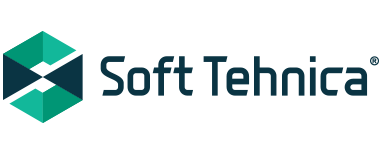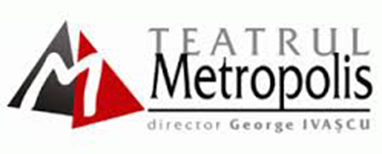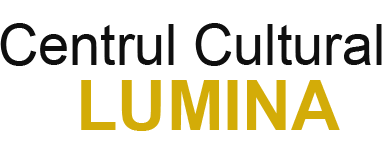While direct costs are immediately traceable to a selected product or service and range with manufacturing ranges, indirect prices are shared among multiple models and remain comparatively constant. Both forms of costs have a significant Direct Costs and Indirect Costs influence on decision-making, financial efficiency, and long-term sustainability. By accurately identifying, allocating, and controlling direct and oblique prices, companies can optimize their value structure, enhance profitability, and obtain their monetary aims. Direct costs are bills that can be instantly attributed to a particular price object, such as a product or service. These costs are simply traceable and embody gadgets like raw materials, labor, and manufacturing supplies.
Are There Tax Advantages For Tracking These Costs?
These overhead or working prices include fastened and variable bills, corresponding to lease and utilities. It’s difficult to allocate oblique prices to a particular product, service, or project. However, you need to use a price allocation process with accounting software program or an enterprise useful resource system to distribute expenses. Competent price control is important to safeguard profitability inside building firms.
Clarifying Variable And Fixed Costs
In conclusion, direct costs and indirect prices play different roles in the cost construction of a enterprise. Direct costs are easily traceable, variable, controllable, and directly allotted to specific cost objects. In distinction, indirect costs are more difficult to trace, fastened, less controllable, and allocated utilizing indirect strategies.
Keeping a close watch on direct costs can highlight areas where bills may be decreased, thereby boosting the financial success of a project. Both direct and oblique prices are used in price accounting to determine the entire price of producing goods or offering services. Direct prices are traced on to a specific product or project, while indirect prices are allocated based mostly on a selected methodology similar to labor hours or overhead rates. Together With both ensures accurate pricing, profitability analysis, and financial reporting. Furthermore, understanding the distinction between direct costs and oblique prices is crucial for budgeting and forecasting purposes.
If I know the way much I spend on direct costs, I can worth my merchandise to cover those prices and make a profit. Oblique prices, however, are tough to or can’t be traced to a single cost object. For instance, electrical energy prices is most likely not straightforwardly traced to a particular product as usage was shared by completely different departments. First, you should determine all of your indirect costs, including lease, utilities, administrative salaries, and depreciation. Oblique costs are bills that can not be directly linked to a specific cost object, though they might be needed for total operations. Direct costs are bills that might be traced to a selected cost object and are directly associated to the product or service you produce.
Keep plugged into the native market and industry to predict upcoming adjustments, similar to new legislation or economic conditions impacting the price of crucial components. Nonetheless, earlier than making any enterprise choice, you should seek the guidance of an expert who can advise you based mostly on your particular person situation. Our finest skilled recommendation on how to grow your business — from attracting new customers to preserving present prospects joyful and having the capital to do it.
Connection To Specific Activities
Direct costs are usually simple to assign to a particular building contract. For instance, the value of concrete used in a building’s foundation or the wages paid to workers on-site are direct prices. These expenses are instantly linked to the bodily development activities and can be easily tracked. Effectively managing direct and oblique prices is essential to sustaining profitability and ensuring sustainable enterprise growth. By understanding these two categories of bills and the way they impact your financials, you could make higher decisions concerning pricing, budgeting, and price management.
- For precise budgeting of projects, effective value administration, and securing profitability, it’s vital to have an intensive grasp of indirect prices.
- Direct prices present revenue margins per unit, and indirect costs reveal how overhead impacts web profit.
- By accurately estimating and allocating each kinds of prices, companies can develop realistic budgets, set achievable targets, and monitor their monetary efficiency effectively.
- Prices that are instantly attributable to specific initiatives, similar to labor, supplies, and tools use, fall into the class of direct prices.
We present third-party links as a convenience and for informational functions solely. Intuit doesn’t endorse or approve these products and services, or the opinions of those firms or organizations or individuals. Intuit accepts no responsibility for the accuracy, legality, or content on these sites. In apply, it’s possible to justify the classification of virtually any expense as both direct and oblique. Focus on constructing sturdy relationships with suppliers and negotiate long-term contacts to safe better pricing for raw supplies or components. Another way during which we divide enterprise expenditure is to discover out whether the expense is fixed or variable.
Examples of price objects are merchandise, companies, geographical areas, distribution channels, and clients. Indirect prices do not vary substantially inside sure manufacturing volumes or other indicators of actions, and so are thought-about to be fixed costs. Oblique prices are an essential consideration for companies as they considerably impact the general profitability and pricing choices.
Managers could make decisions to reduce direct costs by optimizing manufacturing processes, negotiating higher costs with suppliers, or enhancing labor effectivity. In contrast, indirect costs are sometimes more difficult to manage as a end result of they are not immediately tied to production activities. For example, decreasing administrative salaries or utility prices may require more complicated decision-making processes and will have unintended penalties on different components of the enterprise. However for indirect costs, I often want to make use of methods like activity-based costing to spread these bills throughout totally different merchandise. Indirect prices are bills https://www.bookkeeping-reviews.com/ that assist the general operation of a enterprise but can’t be instantly traced to a specific product, service, or project.
Last modified: 16/10/2025







